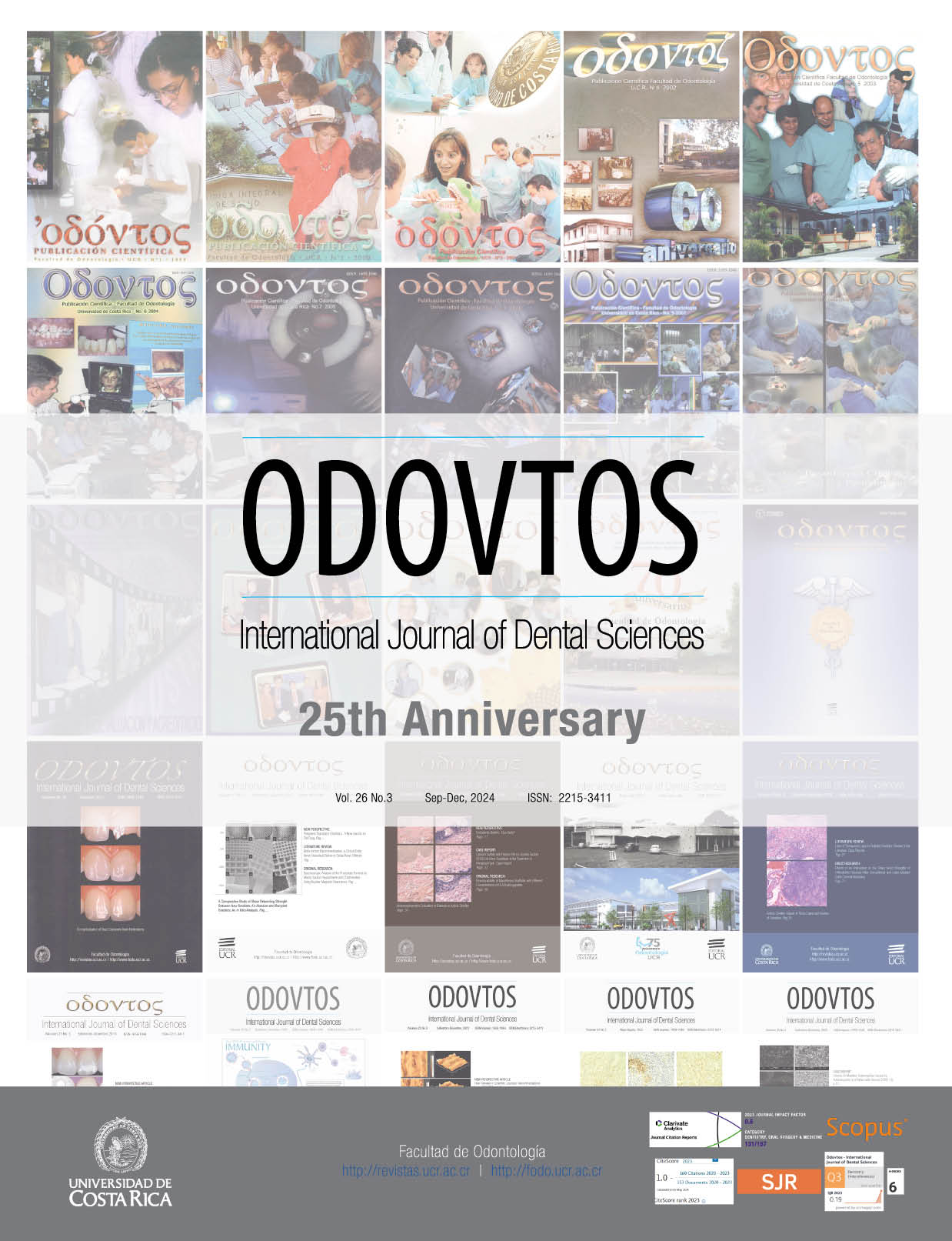Abstract
This study examines the morphology and common anomalies of the cervical vertebrae in different skeletal classes and facial types. This cross-sectional study was conducted on 137 lateral cephalometric images of patients aged 18-55 years. The images were evaluated for fusion and posterior arch deficiency as the two most common anomalies along with cervical vertebral morphology (dense angle, the height of the posterior arch of the atlas, the external anterior posterior diameter of the atlas, and the cranial base angle). Data were categorized into three skeletal classes based on the Wits analysis and the ANB angle and also three facial types based on the SN-MP angle. These calculations were performed in SPSS 22 at the significance level of P<0.05. The height of the posterior arch of the atlas was directly and significantly related to age and increased with it. The mean external anterior posterior diameter of C1 was higher in men and in the hypodivergent group. As for the other factors, including cervical spine anomalies, no significant relationship was observed with age, sex, skeletal classes, facial types, and the cranial base angle. Moreover, the mean morphology of the cervical spine was not significantly associated with skeletal classes. Based on the results, the height of the posterior arch of the atlas was associated with age and increased along with it. Moreover, the mean external anterior posterior diameter of the atlas was greater in men and in hypodivergent individuals.
References
Lemire G.T., Beauregard-Lacroix É., Campeau P.M., et al. Retrospective analysis of fetal vertebral defects: Associated anomalies, etiologies, and outcome. Am J Med Genet A. 2020; 182 (4): 664-672.
Goldstein I., Makhoul I.R., Weissman A., Drugan A. Hemivertebra: prenatal diagnosis, incidence and characteristics. Fetal Diagn Ther. 2005; 20 (2): 121-126.
Kamak H., Yildırım E. The distribution of cervical vertebrae anomalies among dental malocclusions. JCVJS. 2015; 6 (4): 158-161.
Ozturk T., Atilla A.O., Yagci A. Cervicovertebral anomalies and/or normal variants in patients with congenitally bilateral absent maxillary lateral incisors. Angle Orthod. 2020; 90 (3): 383-389.
Bebnowski D., Hänggi M.P., Markic G., Roos M., Peltomäki T. Cervical vertebrae anomalies in subjects with class II malocclusion assessed by lateral cephalogram and cone beam computed tomography. Eur J Orthod. 2012; 34: 226-231.
Anshuka, Vaswani V., Khajuria S. Assessment and comparison of cervical column morphology and cranial base angle in three different facial types– a cephalometric study. J Evolution Med Dent Sci 2020; 9 (36): 2605-2609.
Sonnesen L., Pedersen C., Kjaer I. Cervical column morphology related to head posture, cranial base angle and condylar malformation. Eur J Orthod 2007; 29 (4): 398-403.
Sonnesen L., Kjaer I. Cervical vertebral body fusions in patients with skeletal deep bite. Eur J Orthod 2007; 29 (5): 464-470.
Sonnesen L., Kjaer I. Cervical column morphology in patients with skeletal Class III malocclusion and mandibular overjet. Am J Orthod Dentofacial Orthop 2007; 132 (4): 427.e7-12.
Sonnesen L. Associations between the Cervical Vertebral Column and Craniofacial Morphology. Int J Dent. 2010; 2010: 295728. doi:10.1155/2010/295728
Sonnesen L., Pallisgaard C., Kjær I. Cervical column morphology and craniofacial profiles in monozygotic twins. Twin Res Hum Genet. 2008; 11 (1): 84-92.
Dinesh A., Mutalik S., Feldman J., Tadinada A. Value-addition of lateral cephalometric radiographs in orthodontic diagnosis and treatment planning. Angle Orthod. 2020; 90 (5): 665-671.
Meibodi S.E., Meibodi E.M., Meibodi H.M., Kharazifard M.J. Evaluation of the relationship between cervical vertebral morphology and anterior posterior jaw discrepancies. J Res Dent Sci.2013. 10 (2): 118-123.
Adisen S.R., Adisen M.Z., Ozdiler F.E. The evaluation of the relationship between cervical vertebral anomalies with skeletal malocclusion types and upper airway dimensions. Cranio. 2020;38 (3): 149-157.
Anusuya V., Sharan J., Jena A.K. A study of cervical vertebra anomalies among individuals with different sagittal and vertical facial growth patterns. J Craniovertebr Junction Spine. 2020; 11 (2): 75-80.
Watanabe M., Yamaguchi T., Maki K. Cervical vertebra morphology in different skeletal classes. A three-dimensional computed tomography evaluation. Angle Orthod. 2010; 80 (4): 531-536.
Wilhelm B.M., Beck F.M., Lidral A.C., Vig K.W. A comparison of cranial base growth in Class I and Class II skeletal patterns. Am J Orthod Dentofacial Orthop. 2001; 119 (4): 401-405.
##plugins.facebook.comentarios##

This work is licensed under a Creative Commons Attribution-NonCommercial-ShareAlike 4.0 International License.
Copyright (c) 2023 Farzaneh Ostovarrad, Masoumeh Faghani, Zahra Yousefi, Zahra Tadayoni, Maryam Tofangchiha, Ippolito Caputo, Francesco Pagnoni, Rodolfo Reda, Luca Testarelli


